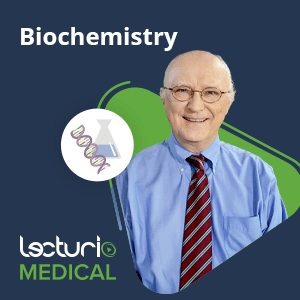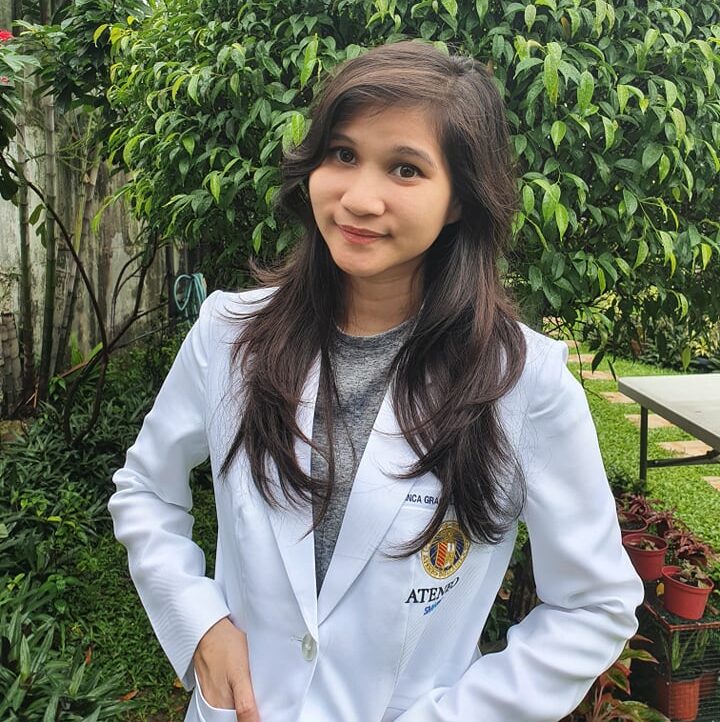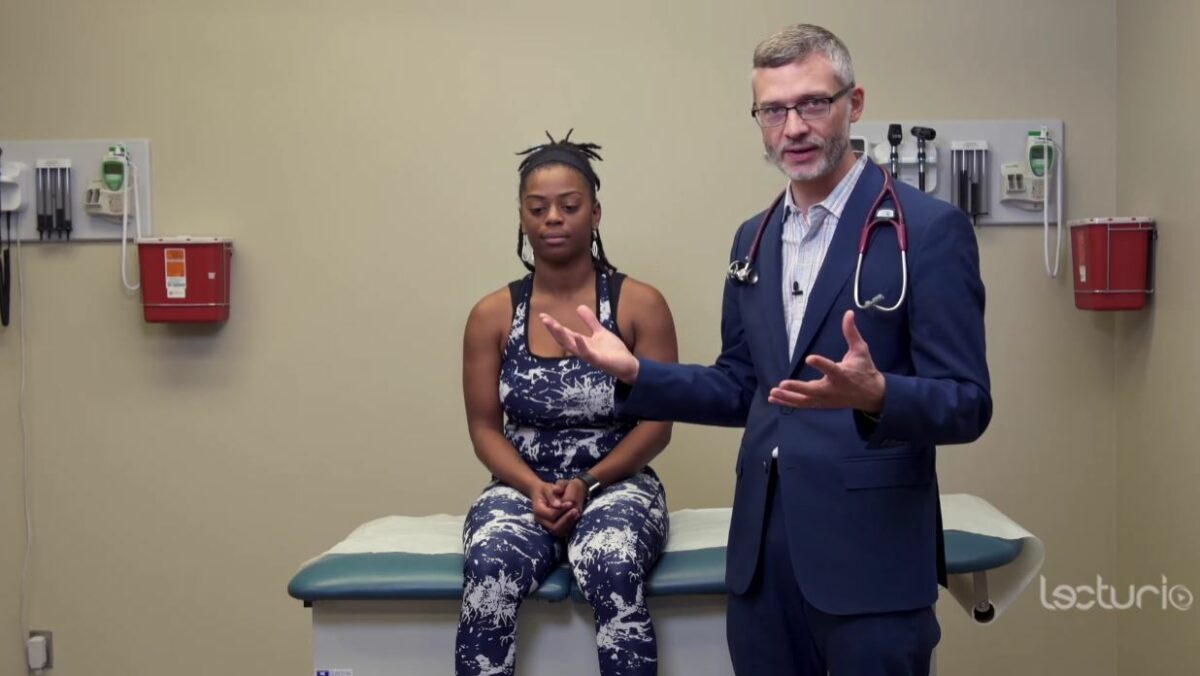Biochemistry is one of the most intimidating subjects in medical school because, unlike anatomy or physiology, the concepts you learn are hard to observe. You don’t really notice your body making ATP or absorbing vitamins. If you can’t directly observe it, it’s hard to recall it. But with the right mindset and approach, Biochemistry can be your new best friend.
The concepts you’re going to learn are essential in all fields of medicine. These small molecules play a big part in keeping your body alive. Life-threatening diseases can be caused by (what seems like) minor mutations or deficiencies in your body. Drugs target certain chemical pathways to produce life-saving outcomes. Don’t worry, it’s possible to pass this subject even without a strong background in chemistry and biology. You just have to be diligent in memorizing and understanding the various concepts.
How to Prepare for Biochemistry Exams
There’s no best way to prepare. As I’ve said before, studying should be tailored to you and how you learn best. With the right mindset, you can triumph over those tricky metabolic pathways and macromolecules. First, think about these small, intricate concepts as part of a bigger picture. Part of understanding biochemistry is being able to shift your focus back and forth between general overviews and tiny details, and see where the details belong.
What you actually need to prepare depends on how you learn. Before I started, I bought a lot of colored pens and large papers. Biochemistry requires a lot of memorization, so prepare your study area so that you can always see diagrams of the pathways. When you’re not looking at your books, you can passively read the diagrams in front of you for easier recall later on.
You can also download apps for biochemistry if you don’t know how to get started with studying. You can even use a book recommended by your school or look for your own. I also recommend getting flashcards on biochemistry or make your own as you go along. Gathering effective resources is like coming into battle with good armor and weaponry. It may not win you the battle, but it gives you a fighting chance.
Biochemistry Study Guide
Lecturio has their own biochemistry course online for you to follow. I highly recommend you start with nailing down your inorganic and organic chemistry concepts first as these will pop up a lot as you go through your biochemistry course. Which of these concepts are the most important for biochemistry? Luckily, WillPeachMD has outlined some of the most essential concepts from both general and organic chemistry.
- General chemistry: Kinetics, redox reactions, pH, and oxygen saturation curves
- Organic chemistry: Acid-base relationships, functional groups, and nomenclature
If you’re going to study biochemistry on your own, start with learning the structures and functions of the 4 main macromolecules of the body: carbohydrates, lipids, nucleic acids, and proteins. Not only is this one of the longest topics, it’s also what I believe is the most essential. It is the backbone of everything else you will learn from here on. Enzyme kinetics is also important. Enzymes are catalysts for spontaneous reactions that will come up in topics like pharmacodynamics.
After the basics, other essential molecules like vitamins, hormones, and cellular signals can follow. These will be the basis for many of the pathways you’ll have to learn later on. They’re also the target for many of the most important drugs you’ll use in the future.
Lastly, you can move on to the metabolic and synthetic pathways for those macromolecules, and genetics. I would leave this last because it requires knowledge of the previous subjects, and it’s personally the hardest. Know the rate-limiting steps as well as the products of each pathway. Many deficiencies and diseases you’ll see in your clinical subjects are associated with these steps. There are a lot of cycles (e.g., the Urea Cycle) and the amount of names you need to memorize can seem endless. But you’ll get there. It’s all a matter of repetition and using your best learning techniques. Analytic techniques can come last, because you need to learn your concepts before you can analyze them.
The Best Way to Study for Biochemistry
#1: Master the basics
I cannot emphasize enough how important the basics are in biochemistry.
Most, if not all, concepts will be difficult to follow without knowing the basics first. You need to understand the structures and why molecules function the way they do because of their structure. In this part, the saying “form follows function” comes into play so often that it’s better to understand first. The memorization should come second, because most of the names are based on their function.
So before the subject starts, I suggest you start brushing up on some chemistry.
You don’t have to thoroughly read it on top of whatever subject you’re studying already. For now, just familiarize yourself with the common functional groups and suffixes used in biochemistry.
#2: Draw the pathways as many times as you need
Biochemistry is extremely visual.
You need to see the cycles again and again to really memorize it. Even better if you can draw it yourself from memory. It seems hard because the pathways have way too many steps and enzymes. Try not to feel overwhelmed. Instead, start with small chunks then link them together. Repetition is key here so you need to keep coming back to pathways you previously memorized and try to draw them again.
It sounds tedious but it’ll pay off in the long run when you look at the bigger picture and realize that you actually understand most of it. You can color code their drawings to make it easier to remember. Adding footnotes can also help you consolidate small details you need to know about the pathway. What matters is that you get better at recalling the steps from memory.
#3: Utilize flashcards and mnemonics
Of course, it was hard to memorize everything perfectly. For me, it was downright impossible without help. I used flashcards to memorize everything, then I’d try to draw it myself afterwards. Mnemonics are useful for the recall of concepts that are hard to connect. I know some people who would make sentences and even stories to memorize difficult pathways. It sounds silly, but the sillier the mnemonics, the better.
For example, a common mnemonic for essential amino acids is “PVT TIM HALL, sometimes Argues but never Tyres, in the BASIC training HAL (hall).” These are the first letters of the essential amino acids with Arginine as a semi-essential amino acid and Tyrosine being neither of the 2 ‘T’s in the mnemonic. HAL includes the first letters of the basic amino acids: Histidine, Arginine, and Lysine.
#4: Know your nomenclature
Contrary to popular belief, scientists don’t make names by slapping their hands on a keyboard. There’s a reason for them. In biochemistry, suffixes are your best friend because they are reused again and again. The best part is that these are giveaways to their function and substrate, too!
Some examples are: enzymes end with “-ase”, “-lysis” means to break down, and “-ose” means it’s a carbohydrate.
If you have trouble memorizing the names in pathways, the name is usually a hint for what’s involved. For example, the first step in glycolysis is turning glucose into glucose-6-phosphate via the enzyme hexokinase. That’s a mouthful already, but let’s break down these words into their derivatives! “Hexo” means “six” and “kinase” means you’re adding a phosphate group. So, “hexokinase” means you’re adding a phosphate group to the 6th carbon molecule of glucose. Hence, your product will be glucose-6-phosphate.
#5: Connect the concepts together
Your body works in a way that its processes complement each other. Some pathways lead to other ones. Other pathways are alternatives to some. For example, glycolysis leads to the Krebs cycle, or the Hexose Monophosphate Shunt makes NADPH for lipid synthesis. Many other pathways are prerequisites or products for one another. It sounds complicated but once you master the smaller chunks, all that’s left is to put the pieces together.
Some people prefer starting with the big picture, then focusing on the details. But that can be overwhelming for many students. When I studied it, I found it easy to study the details and connect them to form the bigger picture.
With every step, ask yourself “why” things happen. Why are some molecules cleaved? Why do we add phosphate groups? Get used to asking “why” questions, and eventually you’ll find connections that just click.
I recommend having a large diagram incorporating all the pathways you need to learn. Post it somewhere that’s easy to see. Even better if you draw it yourself. It can be in front of your study desk, across your bed, or even on your window, as long as it’s somewhere you frequently look. It looks overwhelming, but if you plan it right, you’ll have the whole thing mastered in a few weeks. Believe me, by the time that everything’s done, you’ll look at the diagram and wonder how you managed to pull it off.
Example Practice Question about Biochemistry
A 72-year-old man presents to the hospital with retrosternal chest pain and shortness of breath. The pain started 5 hours before arrival and has not changed after taking sublingual nitroglycerin. The patient has a history of long-standing persistent atrial fibrillation but had not been taking anticoagulants at the time of presentation. He had also been diagnosed with iron-deficiency anemia 3 months before admission and is taking 120 mg of elemental iron daily. ECG shows inferior ST-elevation myocardial infarction. The patient is managed with percutaneous coronary intervention (PCI) of the right coronary artery within an hour of arrival. A few hours later, he develops cardiogenic shock and ultimately dies about 8 hours after his arrival. The autopsy reveals extensive inferior-posterior myocardial infarction, and the image shows a slide of tissue from his heart. Which of the following statements regarding this patient’s cardiac tissue is true?
A. There is coagulative necrosis of the myocytes.
B. The changes in the myocardial tissue result from lipid peroxidation during the patient’s lifetime.
C. The changes are a result of iron overload.
D. The slide shows cardiac steatosis.
E. The microscopic image reveals myocardial hypertrophy.






